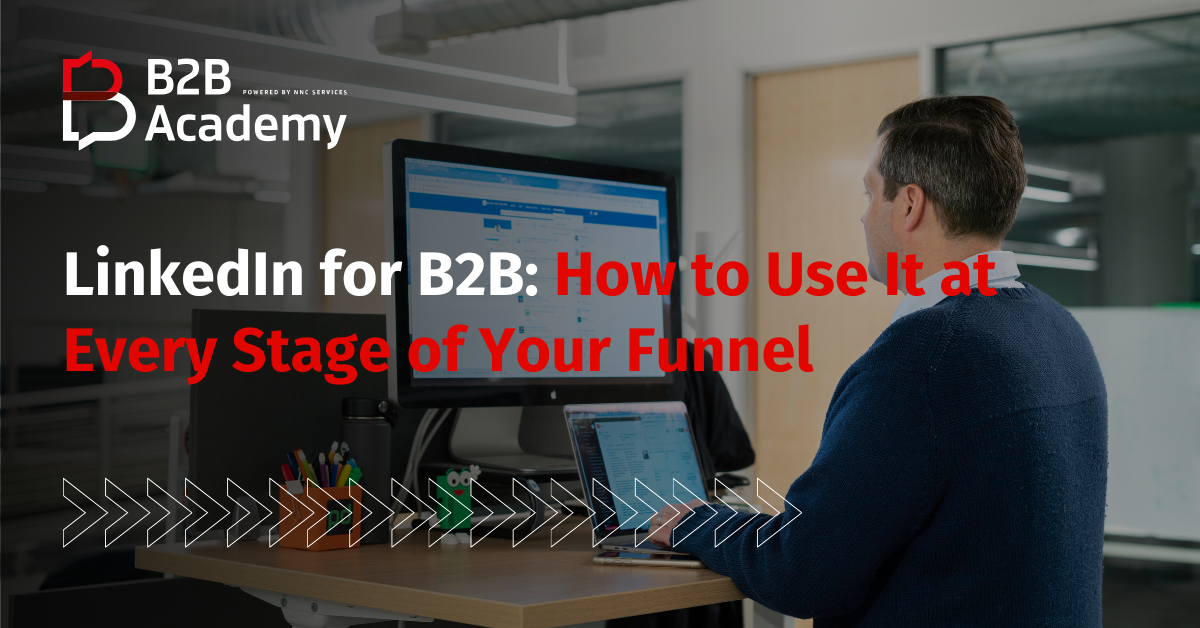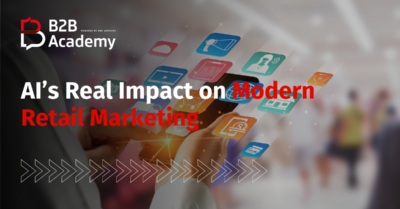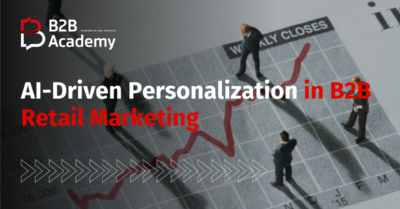When was the last time you actually used LinkedIn as a tool in your B2B marketing funnel? Not just to post a promotion or like a colleague’s new job update, but to strategically move leads through the awareness, interest, and decision stages?
If your answer involves a shrug or a nervous laugh, you’re in good company. Most people still see LinkedIn as a fancy resume board. But the truth is: it’s one of the most powerful platforms to engage, nurture, and convert B2B buyers when used intentionally.
Here’s how you can make LinkedIn work for you at every stage of the funnel.
Top of Funnel: Build Awareness (Without Being Annoying)
At the top, people don’t know you yet. Your job? Help them recognize your name before you pitch them anything. No pressure.
LinkedIn is full of decision-makers. And the content they actually stop to read tends to be informative, authentic, or at the very least, not boring.
Here’s how to earn that first wave:
- Create engaging posts: No need to be a content machine. One to two posts a week that offer insights, commentary on industry news, or relatable lessons go a long way.
- Comment with intention: Not just “Great point!” Add perspective. Ask questions. Challenge politely. This puts your name in front of other people’s networks.
- Optimize your profile: Your headline, about section, and featured links should communicate what you do and who you help. Treat it like your digital storefront.
- Be consistent: The algorithm favors people who show up regularly. So do people.
- Use visuals: Posts with images, charts, or videos tend to stand out. Even a casual snapshot from your workday can humanize your brand.
Think of this phase like casually chatting at an event. You’re showing up, sharing something interesting, and leaving an impression without throwing a business card in someone’s face.
Middle of Funnel: Nurture Trust and Interest
Now they know who you are. Maybe they liked a post. Maybe they viewed your profile. Maybe they even followed you.
This stage is about giving them reasons to keep paying attention. You want to become the person they associate with useful knowledge and helpful solutions, not just another self-promo machine.
- Share case studies or behind-the-scenes content: Help them see what it’s like to work with you. Bonus points for stories over stats.
- Use your profile as a landing page: The “About” and “Featured” sections are prime real estate. Include client wins, value propositions, and links to helpful content.
- Engage regularly: Like and comment on their posts. Send a message if it feels right (but make it personal, not a pitch).
- Join conversations in groups: Don’t be the silent member. Drop knowledge where your buyers hang out.
- Highlight your team: People connect with people. Feature team members, collaborative wins, and real faces behind your business.
- Share thought process, not just results: Audiences often care more about how you think than just the outcomes. Talk about lessons learned, challenges faced, or new ideas you’re exploring.
The middle of the funnel is where leads either stick around or silently vanish. Consistency and authenticity are what keep them coming back.
Bottom of Funnel: Convert Without Pushing
You know those soft signals? The profile views, post likes, and thoughtful DMs? That’s the intent.
If someone is interacting with you more than once, it may be time to start a more direct conversation.
- Send a message that shows you’re paying attention: Reference a post they liked or something you have in common. Keep it short, genuine, and focused on helping, not selling.
- Offer value: Instead of pushing for a call, send a relevant resource, invite them to an event, or ask a smart question.
- Make it easy to take the next step: Include a link to your calendar, website, or lead magnet in your profile and recent posts. No chasing required.
- Include subtle nudges: Your posts can reference availability, recent results, or new opportunities without sounding salesy.
And if you’re working from a company page? That’s your sales assistant:
- Repost high-performing personal content
- Highlight product updates, testimonials, or offers.
- Tag team members and collaborators to expand reach
- Add CTAs subtly: Invite users to book a demo, explore a solution, or download a guide, just don’t make every post a pitch.
- Use analytics: Look at which posts or updates drive traffic to your site or increase profile visits. This can inform your content strategy.
Bottom of funnel doesn’t have to feel pushy. It’s about being visible and available at the right time.
Bonus: Use Your Team to Multiply Reach
Your funnel doesn’t have to be a solo act. If your team is active on LinkedIn, your content gets amplified. Your credibility gets a lift. Your reach grows faster.
Encourage (but don’t force) your team to:
- Share company content with personal commentary
- Post their own wins and client success stories
- Engage with leads in a human, non-salesy way
- Celebrate others internally and externally (because generosity stands out)
- Share learnings from events, webinars, or internal projects
The more people from your company show up authentically, the more touchpoints you create across your funnel. It’s not just visibility, it’s trust by association.
Don’t Forget the Power of Listening
LinkedIn isn’t just for broadcasting your message. It’s a goldmine for insights, feedback, and real-time industry sentiment.
Use it to:
- Watch what your competitors are doing
- Track trending topics in your industry
- Understand what your audience actually cares about
- Identify common pain points in real conversations
Listening well often gives you better ideas than brainstorming alone. And it helps you stay relevant.
So… Where Are You Missing Out?
If you’re only using LinkedIn at the top of the funnel, or worse, not at all, you’re missing key opportunities to connect, build trust, and guide leads toward action.
It doesn’t require a full content calendar or paid tools. It just takes clarity, consistency, and a little courage to be real on a platform full of fluff.
And yes, it works. Because buyers don’t want to be sold to, they want to know who they’re buying from.
So here’s your challenge: pick one funnel stage and focus on it this week. Post something. Comment meaningfully. Start a real conversation.
Chances are, your next client is already there. They just haven’t seen you show up yet. Your LinkedIn funnel isn’t a set-it-and-forget-it system. It’s a living conversation, and it starts when you decide to show up with value.



